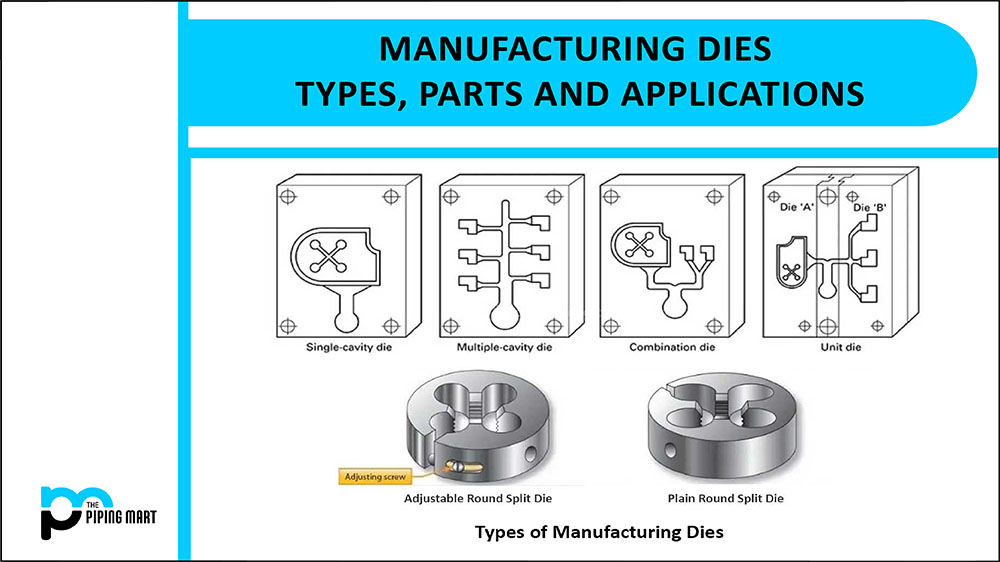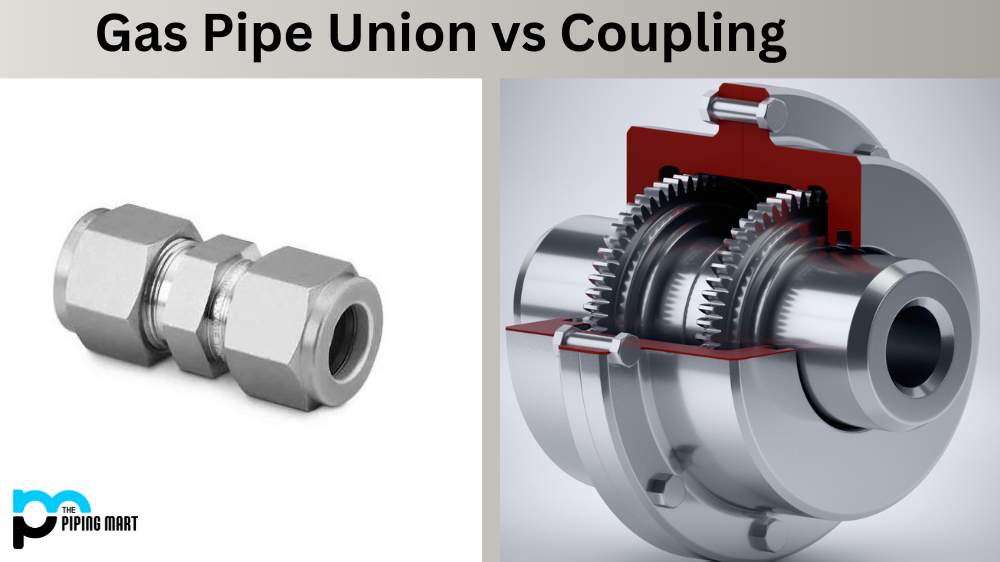What is die in manufacturing?
Dies are machine tools used in various manufacturing sectors to shape metal or create threads on the outside of objects like pipe and round rods. In dies chamfered from one side up to a specified length to make line starting easier, the right-size threads are cut.
Because it is operated by hand, die stock is used for this reason. These are constructed using high-speed steel, alloy steel, and high-carbon steel. These are built from square and circular forms. In general, dies are categorized based on their use, such as stamping dies for press work, casting dies for molding operations, and drawing dies for making wires.
Types of Dies
The following types of dies are commonly used for various purposes:
- Simple Die
Simple dies, also known as one-operation dies, are intended to execute just one operation for each stroke of the press slide. Simple dies can be further categorized in terms of their cutting and shaping capabilities. Cutting dies are employed in blanking, trimming, and notching—the die is used for creating while bending, curling, etc.
- Compound Die
A compound die may punch or cut numerous materials with just one motion. It can, for instance, simultaneously perform cutting and shaping operations in a single stroke. This technique is excellent for high-volume parts. Simple flat items like washers are stamped using compound dies.
The figure depicts the compound die. It punches at both ends and has a spring. The upper portion of the punch makes contact with the metal and punctures the hole after being connected to the ram, after a given downward movement, the spring contracts, allowing the lower punch to move upward and cut the hole.
- Combination Die
The figure depicts the combo die diagram. This particular form of dies combines and completes the cutting and bending processes simultaneously. The cutting process is paired with noncutting activities, including bending, shaping, and blanking, and may also comprise trimming, piercing, and blanking.
- Transfer Die
The transfer dies several tools with a single press. Transfer die has additional benefits when used in high-volume production. Until the metal workpiece takes on the final shape, it can freely transfer the work by giving the portion a different form.
Previously, during these operations, the workpiece was manually transported from press to press and die to die. The transfer process is automated, streamlining the function into a single media.
- Progressive Die
Progressive dies are frequently used to make parts for many sectors, including the automotive and electronic industries. This die stamping utilizes several separate workstations, each executing one or more unique operations on the component. The stock strip transports the work or item from one station to the next before it is cut out of the strip.
The progressive die offers numerous unique advantages, such as a high production rate at a cheap labor cost, the least amount of scraping, and the need for only one setup for the die to function.
- Multiple Die
A punch press that produces two or more identical pieces in one motion is known as a multiple or gang die. At each press stroke, a group of detailed dies and punches are used to create two or more components.
Dies used for Thread Cutting
- Round split Die
Slide Die is another name for these. This die is made of one piece and is cut from the end. This die is attached to the die stock so that all three of the stock’s screws are placed on the seat created for them.
In the stock, this prevents the die from rotating. Before cutting threads, the central screw must be tightened once it has been installed on the task. Small jobs require these dies.
- Adjustable Die
There are two parts to this die. Both have internal cuts made to the piece’s threads. Round grooves are created in these threads as a result of cutting-edge work. These items display the numbers 1 or 2. With the help of the exterior screw, the distance between them can be adjusted. There is a screw seat for this function. With this die, threads can be cut on the gib work. The first high threads are cut by slightly tightening both components, and the other deep lines are cut.
- Die Nut
As depicted in the illustration, it has a square shape or resembles a six-phased nut. Four or six flutes are cut into the threads that are cut inside of it, creating a cutting edge. It is employed to fix worn-out cables. It is movable with a standard spanner.
- Pipe Die
This die is specifically designed to cut the threads on water, gas, and oil pipes, among other types of pipes. It uses two to four pieces of dice that fit in various die handles. An adjusting screw or handles for adjusting the die are included on the stock. This stock or grip has a guide installed that directs the dice to move in the pipe’s straight path. Because this die cuts threads in the taper, the lines it produces are of a unique sort. Because of this, the sockets attached to these pipes become liquid and gas-proof.
- Acron Die
This is how the die is used today. When a pipe is put in a groove or a hole, this die is used to cut the outside threads. Similar to a nut, this die also has internal threads that are intermittently cut, as seen in the illustration. This has a tapered design from one end for ease. It is moved while being held in a certain kind of holder.
- Die Chaser
This kind of die is utilized with a capstan or turret lathe. It is a threaded portion of a die used to cut screws. Six skids are fixed there, similar to a machine chuck, and threads are cut on these skids. The handle on the die head can be used to modify these skids. This die can be used to cut cords to the required length.
- Die Stock
Die handle is another name for it. The skid of the die and this handle are what make a dying ideal. The handle or the stock is equipped with die skids. Die handles from various ranges are used for dies of multiple sizes. These are split into the two sections below:
- Adjustable Die Handle
- Solid Die Handle
Methods of Using Die
- The end of the pipe or rod should be chamfered using a grinder or file before cutting outer threads.
- It should be tightly held in a vice when cutting threads on a pipe, rod, or any other project.
- Continue to move the dice backward and forwards.
- The die handle should experience an equal amount of pressure.
- Threads should be cut after correcting two or three cuts on jobs with a big diameter.
- Thread cutting should be done with the proper lubricant.
- A nut or ring gauge should be used to inspect the threads after cutting them.
- Following the use of the drill. It ought to be thoroughly cleaned before being put back where it belongs.

Pipingmart is B2B portal specializes in industrial, metal and piping products. Also, share latest information and news related to products, materials and different types grades to help business dealing in this industry.




